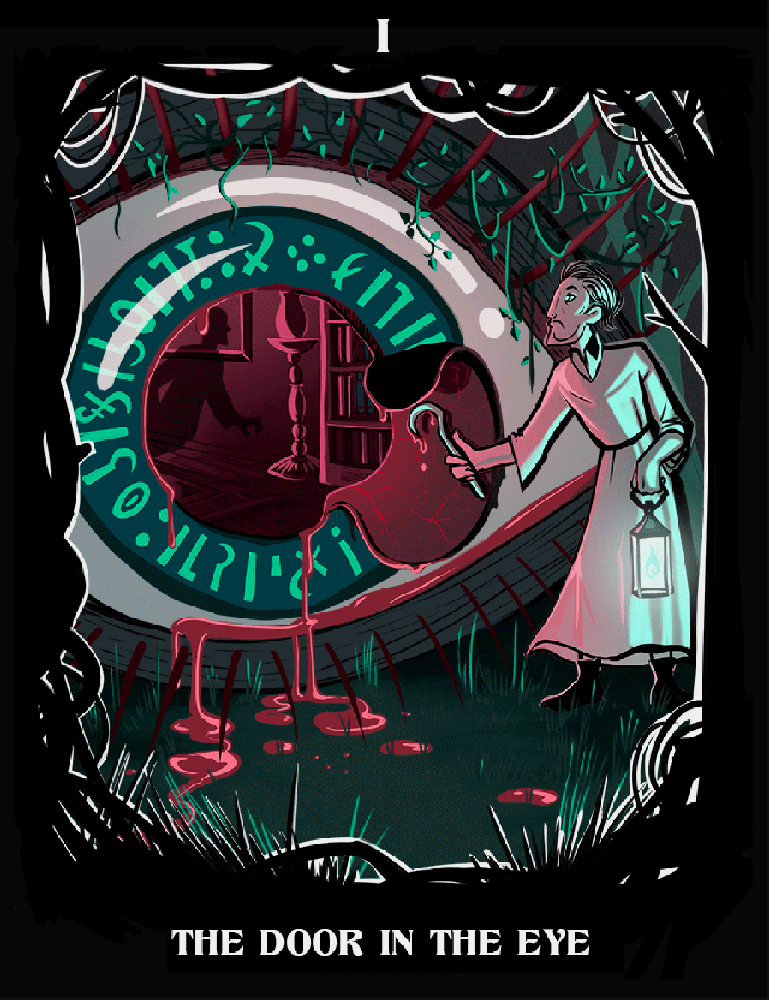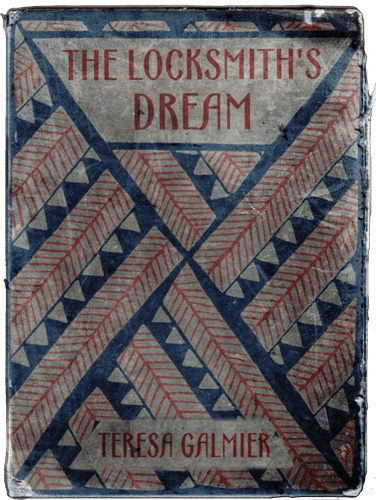[quote=phryne]
Alexis really is a master in the game of "invent-arcane-artifacts-and-drive-people-crazy-with-obscure-hints" ;)[/quote]
Yes he is. My favorite part of the Cultist Simulator prototype is the books.
The Locksmith’s Dream: a Light through the Keyhole
Discovery Text: The first volume of ‘The Locksmith’s Dream.’ A recent, but intriguing work, handsomely bound in gold-tooled calf-leather.
Card Text: The first volume of Teresa Galmier’s examination of parallels in the mystic dreams of artisans.
Study Text: No-one has ever explained why Galmier devoted herself to this quixotic exploration of artisan’s dreams.
Quote: “Time and again we hear of the Wood, which rises from the world’s foundation. All trees reach for light. What does the Wood reach for?”
Lore: Mansus Glimpse
The Locksmith’s Dream: Portions and Proportions
Discovery Text: The second volume of ‘The Locksmith’s Dream.’ A recent, but intriguing work, handsomely bound in gold-tooled calf-leather. The frontispiece, however, has been slashed with a razor.
Card Text: The second volume of Teresa Galmier’s examination of parallels in the mystic dreams of artisans.
Study Text: In this volume, Galmier records fewer dreams, and explicates more of her own elaborate theories.
Quote: “Thus the essence of these visions: what is below can’t escape what is above.”
Lore: Consent of Wounds
Using Consent of Wounds with the Rite of the Watchman’s Sorrow allows you to pay a brief visit to the outer layers of the Mansus. Using it with the Rite of the Crucible of the Soul allows you to summon the Hour of the Red Cup into your body. So she really did find a key - it’s not wonder her second book was suppressed.
[/u][/b]
De Horis [Volume 1]
Discovery Text: A nineteenth-century reprint of a fourteenth-century Latin translation of a fourth-century catalogue of secret gods.
Card Text: An occasionally coherent catalogue of the secret gods, organized by hour. This is a reprint, but in the original Latin.
Translation Text: An enigmatic work: even more enigmatic in Latin.
Study Text: This volume deals mostly with the Hours of the Wood: the Moth, the Black-Flax, the Ring-Yew, among others.
Quote: “The Glory is a question, and the Moth always answers Yes. The Black-Flat’s answer is No, and that is always its answer.”
Lore: Wood Whispers
The Orchid Transfigurations (‘a feast’)
Discovery Text: The first volume of the ‘Orchid Transfigurations.’ A sixteenth-century alchemical fever-dream, frequently banned for the disturbing allure of its illustrations.
Card Text: An original edition of a compilation of quasi-Rosicrucian allegories, supposedly by Robert Fludd. This is the original Latin.
Translation Text: It seems unlikely that this is Fludd. Fludd would write better Latin.
Study Text: The illustrations are certainly striking. They flush the skin and glow beneath the eyelids after the book is closed.
Quote: “We must devour to be devoured. We cannot be undevoured, as we cannot be unborn.”
Lore: The Delightful Sacrament
Traveling at Night (Vol. 1)
Discovery Text: The dream-journal of Christopher Illopoly, sometimes called ‘the only readable occultist.’
Card Text: The annotated dream-journals of Christopher Illopoly.
Study Text: Illopoly’s work is literate, entertaining, and bewildering.
Quote: “The Wood lies outside the walls of the Mansus. As any student of the Histories knows, the Wood has no walls.”
Lore: Wood Whispers
Six Letters on Necessity
Discovery Text: A printed edition of the Six Letters of Necessity. A small volume of the correspondence of a seventeenth-century magus.
Card Text: Warnings and confessions about the cost of the secret arts, addressed to a student by the seventeenth-century magus (and reputed immortal) Julian Coseley. .
Study Text: Coseley’s tone is urgent – as if he suspected he might have little time left.
Quote: “Even the Sunne can be divided, though it require the Forge of Dayes for its division.”
Lore: Ardent Prayers
The Geminial
Discovery Text: A manuscript of unusual antiquity, its cover decorated with fragments of coral.
Card Text: A fragile manuscript, illuminated with twinned shapes of sad and luminous beauty, and with all the phases of the moon. It might be as old as the sixth century, but the language – Fucine – is much older. The page-edges have been known to cut like razors.
Fucine: A people lived east of the lost lake of Fucino. Horace warned that theirs was the land of witches. This was their language, called by some ‘the dry tongue’ and by others ‘the tongue of witches.’
Principle: Knock
Lore: Unknown
Book Analysis
I suspect that the Locksmith’s Dream has a total of three books, as this would fit the escalation that occurs between the first and second volumes. The first volume begins unassumingly enough with an esoteric, almost scholarly exploration of artisans dreams (sounds harmless, doesn’t it?). The second volume becomes more theoretical and crosses a number of lines in the process, resulting in copies of it being mutilated and suppressed. It seems likely that there’s an unpublished and very supernatural third book out there somewhere, written right before or sometime after Galmier went through the Spider Door. Furthermore, Galmier’s focus on artisans implies some sort of correspondence between the medieval building guilds and the Mansus, with the dreams of the locksmiths in particular being her key to understanding and ultimately opening the Mansus’ doors. Everything in the visible world has some sort of relationship with the powers of the invisible world. (“Thus the essence of these visions: what is below can’t escape what is above.”) Like to like is very much in effect.
The De Horis is an occult encyclopedia that was anonymously constructed out of earlier texts sometime in late antiquity. The fact it isn’t ascribed to a single author suggests that it was a group creation. My guess is that it was originally a Hellenic work before it was translated into Latin, but in a world where Fucine, “the tongue of witches,” is a thing, who really knows where it came from. The encyclopedia probably has a total of seven volumes, one volume for each occult principle/hour, making it the ideal introductory work.
The Orchid Transfigurations is a very weird text. It is definitely not the work of a single author, as its attribution to Robert Fludd is clearly bogus and your character identifies the work itself as a “compilation” of texts pretending to be something they’re not (in this case, Rosicrucian). It sounds a little bit like the Corpus Hermeticum, where a number of diverse texts arising out of a shared intellectual milieu were later combined together into a single invented tradition and wrongly ascribed to a single author. As the common milieu of the Orchid Transfigurations is sixteenth century alchemy, it seems safe to assume that all the volumes explicitly deal with the subject of perfection and transmutation. The hodge-podge nature of the compiled sources however means that the nature and intent of these transmutations could vary pretty widely. Yet the compiler must have had a larger purpose in mind when making the selections that they did. Personally, this series is my favorite so far, as I just love strange stuff like this.
The Geminial, is the only book that is explicitly magical. You can’t translate it in the prototype game and it will probably take some effort to do so in the full game, but the payoff will probably be pretty substantial. Even untranslated you can use it’s strangely razor sharp pages to perform human sacrifices (yikes). As you move from searching through dusty bookstores to actually collecting relics of power, more and more of your attention will no doubt focus on items like The Geminial and their possible uses.
.
edited by Anne Auclair on 8/9/2017

